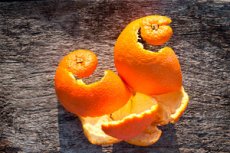Orange peel extract may improve heart health
Last reviewed: 14.06.2024

All iLive content is medically reviewed or fact checked to ensure as much factual accuracy as possible.
We have strict sourcing guidelines and only link to reputable media sites, academic research institutions and, whenever possible, medically peer reviewed studies. Note that the numbers in parentheses ([1], [2], etc.) are clickable links to these studies.
If you feel that any of our content is inaccurate, out-of-date, or otherwise questionable, please select it and press Ctrl + Enter.

A new study conducted by the University of Florida and published in the Journal of Agricultural and Food Chemistry finds that orange peels may play an important role in improving cardiovascular health.
Heart disease is the leading cause of death among men, women and most racial and ethnic groups, according to the Centers for Disease Control and Prevention.
Recent studies have shown that certain gut bacteria contribute to the development of cardiovascular disease. When these bacteria feed on certain substances during digestion, they produce trimethylamine-N-oxide (TMAO). TMAO levels may predict future cardiovascular disease, according to researchers from the Cleveland Clinic.
Yu Wang and her team investigated the potential of orange peel extracts, rich in beneficial phytochemicals, to reduce the production of TMAO and trimethylamine (TMA). Scientists tested two types of extracts: polar and non-polar fractions.
To obtain the polar fractions, the scientists used polar and nonpolar solvents to extract the orange peel, Wang explained.
"If you think of a salad dressing, everything that's in the water or vinegar is the polar fraction; everything that's in the oil, away from the water, is the non-polar fraction," Wang said. "The solvents we used were not exactly the same as water and oil, but they have similar polarities."
The results of the study showed that the extract from the non-polar fraction of orange peel effectively suppresses the production of harmful chemicals. The scientists also identified a compound called feruloylputrescine in the polar fraction of orange peel extract that also significantly inhibited the enzyme responsible for TMA production.
“This is a new discovery that highlights the previously unrecognized potential of feruloylputrescine in reducing the risk of cardiovascular disease,” said Wang, assistant professor of food science and human nutrition at UF/IFAS.
This discovery is significant because the orange juice production process in the United States produces 5 million tons of orange peels each year. Almost 95% of Florida's oranges are used for juice production. About half of the crusts are used to feed livestock, the rest is thrown away. But the US Food and Drug Administration considers orange peel extracts safe for human consumption. So Wang hopes to find a better use for the crusts.
"These results show that orange peels, often discarded as waste in the citrus industry, can be repurposed into valuable health ingredients such as dietary supplements or food ingredients," said Wang, a faculty member at the Center. Research and education in the field of citrus UF/IFAS.
"Our research paves the way for the development of functional foods enriched with these bioactive compounds, offering new therapeutic strategies for heart health."
